Welcome to an inspiring journey of transformation – where misfortune is turned into hope, and communities are rebuilt by empowering locals. In this article, we will explore the various strategies and initiatives that can help uplift communities facing challenges and pave the way for a brighter future.
Communities around the world often face a wide range of issues such as poverty, lack of access to education and healthcare, limited economic opportunities, and social inequalities. These challenges can be overwhelming, leaving the affected individuals and families feeling discouraged and without a sense of hope for a better tomorrow.
However, it is crucial to remember that communities have incredible potential and resilience. By tapping into their strengths and providing them with the necessary support and resources, we can empower locals to initiate positive change and rebuild their communities from within. Empowering locals is a sustainable approach that fosters a sense of ownership and pride among community members.

Throughout this article, we will delve into various strategies and initiatives that can be implemented to empower communities and rebuild their foundations. From promoting education and skill development to empowering women and youth, strengthening the local economy, improving healthcare and access to resources, harnessing technology and innovation, building collaborative partnerships, and measuring and sustaining impact, there are numerous avenues to explore and make a difference. So, let’s get started on this empowering journey of transformation and instill hope in communities worldwide.
“Empowering locals is a sustainable approach that fosters a sense of ownership and pride among community members.”
Understanding Local Challenges
Identifying the Root Causes of Misfortune
When it comes to rebuilding communities and empowering locals, a crucial first step is to understand the local challenges they face. Identifying the root causes of misfortune is essential in order to develop effective solutions. Here are some key points to consider:
- Socioeconomic Factors: Many communities face poverty, lack of access to basic amenities, and limited economic opportunities. It is important to analyze the underlying socioeconomic factors that contribute to these challenges.
- Environmental Issues: Communities may struggle with natural disasters, climate change, or environmental degradation. Understanding the impact of these factors on the community is vital for devising sustainable solutions.
- Social and Cultural Factors: Social and cultural dynamics play a significant role in shaping the challenges faced by a community. Factors like gender inequality, discrimination, and lack of social cohesion can hinder progress. It is crucial to understand these factors and work towards social inclusivity.
Recognizing the Strengths of the Community
While it is essential to identify challenges, it is equally important to recognize and celebrate the strengths of the community. Empowering locals involves building upon existing resources and capabilities. Here’s why recognizing the strengths of the community is crucial:
- Resilience and Resourcefulness: Communities often possess a remarkable resilience and resourcefulness in dealing with adversity. Acknowledging and supporting these qualities can help instill hope and belief in the community.
- Cultural Heritage: Communities have unique cultural traditions, knowledge, and skills. Embracing and preserving these invaluable assets can contribute to community pride and create opportunities for cultural tourism and sustainable development.
- Local Expertise: The residents possess valuable insights and understanding of their community’s needs. Engaging locals in decision-making processes is vital for effective and sustainable community development.
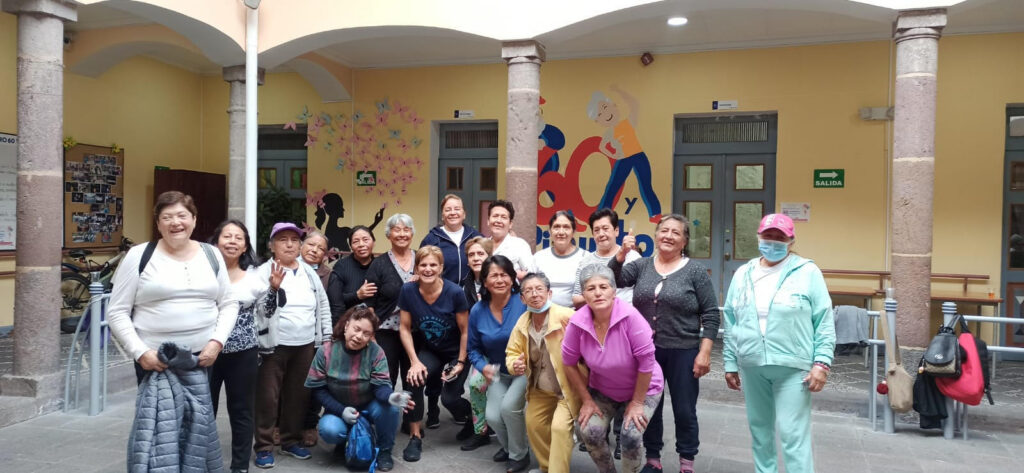
By understanding the local challenges and recognizing the strengths within the community, we can lay the foundation for successful community empowerment initiatives. With a comprehensive understanding of the root causes of misfortune and the assets at our disposal, we can now focus on developing strategies to promote education and skill development.
Continue reading this series to learn more about how education and skill development can transform communities by empowering locals.
Promoting Education and Skill Development
Education and skill development are crucial factors in empowering individuals and communities to overcome misfortune and rebuild their lives. By promoting education and providing access to skill development programs, we can equip individuals with the tools they need to thrive and contribute to their communities. In this section, we will explore some key strategies for promoting education and skill development in communities.
Building and Supporting Local Schools
One of the first steps in promoting education is to ensure that there are accessible and quality schools in the community. By focusing on building and supporting local schools, we can create a positive learning environment for children and provide them with the opportunity to acquire essential knowledge and skills.
Some ways to support local schools include:
- Investing in infrastructure: Renovating and expanding school buildings, providing necessary resources such as desks, books, and technology.
- Hiring qualified teachers: Attracting skilled and passionate educators who can provide quality education to students.
- Improving curriculum: Developing a curriculum that is relevant, engaging, and tailored to the needs of the community.
- Encouraging parental involvement: Promoting active participation of parents in their children’s education through workshops, meetings, and support programs.
Providing Vocational Training Programs
In addition to formal education, vocational training programs play a vital role in equipping individuals with practical skills that are in demand in the job market. These programs focus on specific trades or industries and provide hands-on training and experience to participants.
Some benefits of vocational training programs include:
- Bridging the skills gap: By offering training in industries that have a high demand for skilled workers, vocational programs help address the gap between job requirements and the skills possessed by the local workforce.
- Increasing employability: Acquiring vocational skills can significantly enhance individuals’ chances of finding stable employment and securing a better future for themselves and their families.
- Encouraging entrepreneurship: Vocational training programs can also empower individuals to start their own businesses, contributing to the growth of the local economy.

By promoting education and skill development through building and supporting local schools and providing vocational training programs, we can create a foundation for individuals to thrive and contribute to their communities. Through these initiatives, we empower individuals with the knowledge and skills they need to overcome misfortune and build a brighter future.
“Education is the most powerful weapon which you can use to change the world.” – Nelson Mandela
Empowering Women and Youth
In communities facing misfortune, empowering women and youth plays a crucial role in rebuilding and transforming those communities. When women and youth are empowered, they become agents of change and drivers of progress. By creating opportunities and providing support, we can help empower women and youth to shape their own futures and contribute to the growth and development of their communities.
Creating Opportunities for Women
Women often face unique challenges and barriers to empowerment, such as limited access to education, financial resources, and decision-making power. However, when women are given the tools and opportunities to thrive, they can become powerful catalysts for positive change. Here are some ways we can empower women in communities:
- Education and Skill Development: Providing women with access to quality education and skill development programs equips them with the knowledge and expertise needed to succeed in various fields. This not only enhances their personal growth but also empowers them to contribute to their community’s development in meaningful ways.
- Entrepreneurship Support: Encouraging and supporting women in starting their own businesses can have a significant impact on their economic independence and overall empowerment. By offering mentorship programs, access to microfinance, and business training, we can enable women to become successful entrepreneurs and provide for themselves and their families.
Youth Empowerment Initiatives
Empowering youth is essential for building a sustainable and prosperous future. By investing in their education, skills, and leadership abilities, we can ensure that they have the tools to make a positive impact. Here are some strategies for empowering youth in communities:
- Education and Career Guidance: Providing career counseling and guidance services helps young people make informed decisions about their future. By helping them identify their interests and strengths, we can direct them towards educational opportunities and career paths that align with their goals.
- Youth Development Programs: Offering programs that focus on leadership development, life skills, and personal growth helps young people build confidence, resilience, and critical thinking abilities. These programs also create a safe and supportive environment where they can connect with peers and mentors who can inspire and guide them.
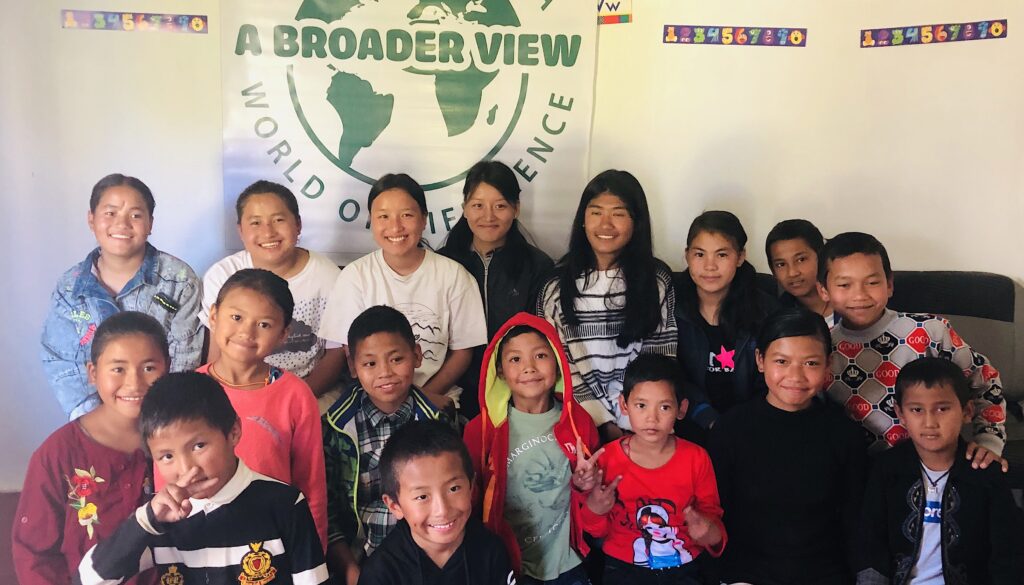
Empowering women and youth in communities facing misfortune not only improves their individual lives but also has a ripple effect on the overall community. When women are empowered, they become role models for future generations, breaking the cycle of gender inequality. Similarly, when youth are given the opportunity to thrive, they become active participants in their community’s growth and development.
As Nelson Mandela once said, “Education is the most powerful weapon you can use to change the world.” By providing education, skills, and opportunities for women and youth, we can create a brighter and more hopeful future for communities in need. Together, let’s empower women and youth to transform misfortune into hope.
Strengthening Local Economy
One of the key components of rebuilding communities and empowering locals is strengthening the local economy. By supporting local entrepreneurs and businesses and encouraging sustainable practices, we can create stable and thriving economies that benefit everyone. In this section, we will explore the strategies and initiatives that can be implemented to strengthen the local economy and foster economic growth.
Supporting Local Entrepreneurs and Businesses
Supporting local entrepreneurs and businesses is essential for economic development. Here are some ways to strengthen the local economy:
- Buy Local: Encourage residents to support local businesses by shopping locally. This not only keeps money within the community but also helps create jobs and boosts the local economy.
- Microfinance: Provide access to microfinance loans for small business owners who may not have access to traditional banks. These loans can help them expand their businesses and create employment opportunities.
- Business Development Services: Offer training and mentoring programs for aspiring entrepreneurs to develop their skills and knowledge in areas such as marketing, finance, and management. This support can help them start and grow successful businesses.
- Business Incubators: Establish business incubators where entrepreneurs can access resources, network with like-minded individuals, and receive guidance from industry professionals. These incubators can provide a nurturing environment for startups and help them thrive.
Encouraging Sustainable and Ethical Practices
Promoting sustainable and ethical practices is not only beneficial for the environment but also for the long-term economic growth of a community. Here are some ways to encourage sustainability and ethics within the local economy:
- Green Initiatives: Encourage businesses to adopt green practices such as using renewable energy sources, reducing waste, and implementing recycling programs. This not only helps protect the environment but can also attract environmentally-conscious consumers.
- Supporting Local Agriculture: Promote local agriculture by encouraging residents to buy local produce and supporting farmers markets. This not only helps the local agricultural industry but also ensures access to fresh and healthy food for the community.
- Fair Trade: Encourage businesses to adopt fair trade practices by ensuring fair wages and working conditions for workers within their supply chains. This helps create a more equitable and sustainable global economy.
- Promoting Local Products: Develop marketing campaigns and platforms that highlight and promote locally made products. By creating a demand for local products, businesses can thrive and contribute to the economic growth of the community.
By implementing these strategies and initiatives, communities can strengthen their local economies, create sustainable livelihoods for residents, and rebuild with a focus on long-term growth.

Improving Healthcare and Access to Resources
Access to quality healthcare and essential resources is crucial for the well-being and development of any community. Unfortunately, many communities around the world face challenges in this area, with limited healthcare facilities and inadequate access to resources like clean water and sanitation. In this section, we will explore how communities can work towards improving healthcare and access to resources, transforming misfortune into hope.
Building Healthcare Facilities and Services
One of the key steps in improving healthcare is to build and strengthen healthcare facilities within the community. This can be done in several ways:
- Infrastructure Development: Investing in the construction or renovation of hospitals, clinics, and health centers helps in expanding healthcare services, especially in rural areas that may lack proper medical facilities.
- Medical Staff and Training: Recruiting and training healthcare professionals, such as doctors, nurses, and technicians, is essential for providing quality care to the community. Offering incentives and scholarships can attract skilled professionals to work in underserved areas.
- Preventive Care: Promoting preventive healthcare measures, such as vaccinations, regular check-ups, and health education programs, can help in reducing the incidence of diseases and promoting overall well-being.
Ensuring Access to Clean Water and Sanitation
Access to clean water and sanitation is a fundamental necessity for good health. Lack of proper sanitation facilities and clean water sources can lead to the spread of diseases. To address these issues, communities can take the following steps:
- Water and Sanitation Infrastructure: Building wells, water treatment plants, and sanitation facilities can provide access to clean water and improved hygiene practices.
- Community Education: Educating the community about the importance of clean water, proper sanitation, and hygiene practices can bring about behavior change and reduce the risk of waterborne diseases.
- Collaboration with NGOs and Government: Partnering with non-governmental organizations and government agencies can help in implementing sustainable water and sanitation projects and ensuring their long-term maintenance.

By focusing on improving healthcare services and ensuring access to clean water and sanitation, communities can significantly enhance the well-being of their residents. These efforts can bring renewed hope and improve the overall quality of life.
“Access to quality healthcare and clean water should be the basic rights of every individual. By working together, we can transform misfortune into hope and create healthier, thriving communities.”
Harnessing Technology and Innovation
In today’s rapidly evolving world, technology and innovation play a crucial role in transforming communities and improving the lives of people. By harnessing the power of technology and embracing innovation, communities can overcome challenges, increase efficiency, and unlock new opportunities. In this section, we will explore how technology and innovation can be leveraged to empower and uplift communities.
Digital Solutions for Community Development
Technology has the potential to revolutionize community development efforts by enabling access to information, improving communication, and facilitating collaboration. Here are some ways in which digital solutions can contribute to community development:
- Online platforms: Creating online platforms can help connect community members, organizations, and resources. These platforms can serve as hubs for information sharing, collaboration, and accessing services.
- Mobile applications: Developing mobile applications can provide communities with access to essential services and resources. For example, healthcare apps can enable remote consultations, education apps can facilitate remote learning, and agriculture apps can provide farming techniques and market information.
- Data-driven decision making: Utilizing data analytics and visualization tools can assist in identifying community needs, evaluating program effectiveness, and making informed decisions. By analyzing data, community leaders can design targeted interventions and allocate resources more efficiently.
Encouraging Innovation and Entrepreneurship
Innovation and entrepreneurship are vital drivers of economic growth and community development. By encouraging innovation, communities can find unique solutions to their challenges and create sustainable pathways for development. Here’s how innovation and entrepreneurship can be promoted:
- Incubators and accelerators: Establishing incubators and accelerators can nurture local talent and support innovators and entrepreneurs. These programs provide mentoring, networking opportunities, and access to resources necessary for turning ideas into successful ventures.
- Hackathons and competitions: Organizing hackathons and innovation competitions can bring together individuals with diverse skills and backgrounds to solve specific community challenges. These events foster creativity, collaboration, and the development of innovative solutions.
- Digital skills training: Equipping community members with the necessary digital skills can empower them to leverage technology for their benefit. Providing training on coding, digital marketing, and other relevant skills can open up new opportunities and ignite entrepreneurial endeavors.

In conclusion, harnessing technology and innovation can greatly impact community development efforts. By leveraging digital solutions, promoting innovation, and equipping people with the necessary skills, communities can unlock their full potential and create sustainable change. Embracing technology and innovation is not only a means to overcome challenges but also a pathway to a brighter future. So, let’s embrace the power of technology and innovation in transforming communities and creating a better world for all.
Building Collaborative Partnerships
Building collaborative partnerships is a crucial aspect of rebuilding communities and empowering locals. By working together with local NGOs, non-profits, and other organizations, we can create synergistic relationships that enhance the impact of community development efforts. In this section, we will explore the importance of building collaborative partnerships and discuss some strategies for fostering these relationships.
Engaging Local NGOs and Non-profits
Local NGOs (Non-Governmental Organizations) and non-profits play a vital role in community development. These organizations often have a deep understanding of the local context and have built strong relationships with community members. By partnering with them, we can leverage their knowledge, expertise, and existing networks to create more effective and sustainable solutions.
Here are some ways to engage with local NGOs and non-profits:
- Research and Identify: Conduct thorough research to identify reputable and trustworthy NGOs and non-profits operating in the community. Look for organizations that align with your values and goals.
- Collaborate on Projects: Approach these organizations with a collaborative mindset. Seek their input and involve them in the planning and implementation of community development projects. Their on-the-ground experience can provide valuable insights and ensure that initiatives are tailored to the specific needs of the community.
- Share Resources: Collaboration is often about sharing resources and expertise. Offer resources such as funding, training, or technical support to help strengthen the capacity of the local NGOs and non-profits. This reciprocity creates a sense of partnership and mutual benefit.
- Regular Communication: Maintain open lines of communication with the partnering organizations. Regularly update them on project progress, seek feedback, and address any concerns or challenges. Clear and transparent communication builds trust and strengthens the partnership.
Creating Synergistic Partnerships
Building collaborative partnerships involves more than just engaging with local NGOs and non-profits. It also means fostering relationships with other stakeholders, such as government agencies, businesses, and community leaders. These synergistic partnerships bring together different perspectives, resources, and capabilities to create a comprehensive approach to community development.
Here are some strategies for creating synergistic partnerships:
- Identify Shared Objectives: Look for organizations and stakeholders that share similar objectives and values. Collaborative partnerships are most effective when there is alignment in goals and a shared commitment to creating positive change.
- Engage Stakeholders: Involve various stakeholders in the decision-making process. This includes community members, local leaders, businesses, and government representatives. Their involvement ensures that initiatives are inclusive and representative of the community’s needs and aspirations.
- Facilitate Collaboration: Act as a facilitator to bring together different partners and stakeholders. Encourage and enable collaboration by organizing workshops, forums, or networking events. These platforms provide opportunities for building relationships and fostering cooperation.
- Leverage Complementary Strengths: Each partner brings unique strengths and resources to the table. Identify and leverage these complementary strengths to maximize the impact of joint initiatives. For example, a local business may provide funding or in-kind support, while an NGO may offer technical expertise.
- Establish Clear Roles and Responsibilities: Clearly define the roles and responsibilities of each partner to ensure effective coordination and accountability. This clarity helps avoid duplication of efforts and promotes efficient use of resources.
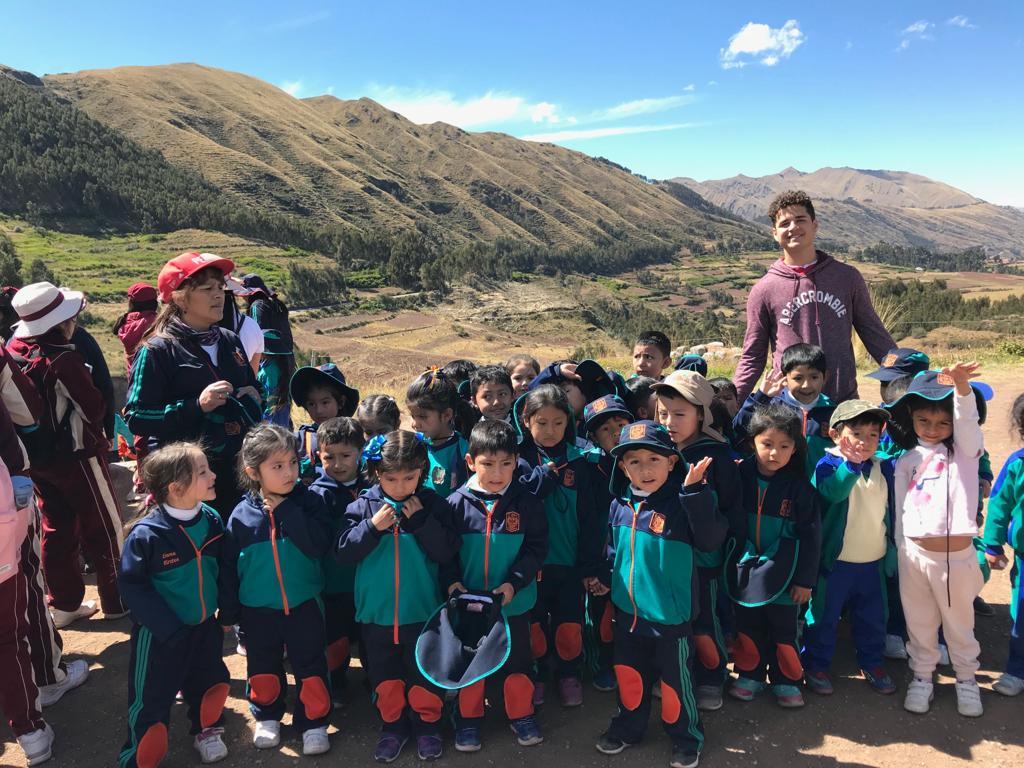
Building collaborative partnerships is an ongoing process that requires trust, commitment, and open communication. By harnessing the collective efforts of NGOs, non-profits, stakeholders, and community members, we can create a powerful force for change and transform misfortune into hope.
So, let’s come together, collaborate, and make a real difference in our communities.
Measuring and Sustaining Impact
The success of any community development initiative lies in its ability to create long-lasting and sustainable impact. It’s not enough to simply implement projects and programs; it’s crucial to measure their effectiveness and ensure their continued success. When it comes to measuring and sustaining impact, there are several key factors to consider.
Monitoring and Evaluation
“What gets measured, gets managed.” – Peter Drucker
Monitoring and evaluation play a critical role in measuring the impact of community development efforts. By systematically collecting data and assessing the outcomes of projects, organizations can gain valuable insights into what is working and what needs improvement. Here’s how monitoring and evaluation can help in measuring and sustaining impact:
- Setting clear objectives: Clearly defining project objectives allows for the development of meaningful metrics and indicators to track progress.
- Data collection: Collecting relevant and accurate data is essential for monitoring and evaluation. This can include quantitative data (such as surveys, interviews, and statistics) and qualitative data (such as stories, testimonials, and observations).
- Regular analysis: Analyzing the collected data helps identify trends, patterns, and areas of success or improvement. It allows organizations to make data-driven decisions and adapt strategies accordingly.
- Feedback loops: Establishing feedback loops with the community members and stakeholders ensures that their voices are heard and their perspectives are taken into account during the evaluation process.
- Learning and adaptation: The insights gained from monitoring and evaluation help organizations learn from their experiences and make necessary adjustments to their programs. This iterative process ensures that the impact is maximized and sustained over time.
Long-term Sustainability
Sustainability is a crucial aspect of community development. It involves creating solutions that can be maintained and supported by the community itself, even after external assistance is reduced or withdrawn. Here’s how to promote long-term sustainability:
- Capacity building: Building the capacity of individuals and local organizations empowers them to continue the work independently. This can include providing training, mentorship, and resources to develop their skills and knowledge.
- Ownership and participation: Encouraging community members to take ownership of development initiatives fosters a sense of responsibility and investment in their success. Involving them in the decision-making process and allowing them to participate actively ensures that the solutions meet their specific needs.
- Collaboration and partnerships: Collaborating with other stakeholders, including government bodies, NGOs, and private sector organizations, can provide additional resources and support for sustainability. It allows for the pooling of expertise, sharing of resources, and the leveraging of collective efforts.
- Financial sustainability: Identifying and diversifying funding sources helps ensure the financial sustainability of community development projects. This can include exploring grants, donations, social enterprises, and income-generating activities.
- Knowledge sharing: Sharing knowledge and best practices with other organizations and communities promotes continuous learning and innovation. It allows for the replication and adaptation of successful models and approaches in different contexts.
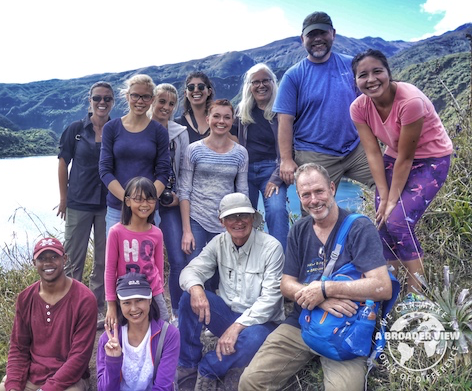
In conclusion, measuring and sustaining impact is essential for effective community development. By implementing robust monitoring and evaluation practices, organizations can track progress, learn from experiences, and make data-driven decisions. Additionally, promoting long-term sustainability through capacity building, ownership, collaboration, financial sustainability, and knowledge sharing ensures that the impact continues long after the initial intervention. Together, these efforts contribute to the transformation of communities by empowering locals and creating lasting change.
Conclusion
In conclusion, transforming misfortune into hope and rebuilding communities is not an easy task, but it is possible with the right strategies and approaches. By empowering locals and addressing the root causes of misfortune, we can create lasting change and build stronger, more resilient communities. Through education and skill development, we can equip individuals with the tools they need to thrive and contribute to their community’s growth. Empowering women and youth is crucial for social progress and sustainable development.
By strengthening the local economy and promoting sustainable practices, we can ensure long-term prosperity. Improving healthcare and access to resources is essential for the well-being of the community. By harnessing technology and innovation, we can find creative solutions to address local challenges. Finally, building collaborative partnerships and measuring impact are key to sustaining and expanding successful community development initiatives. Together, let’s work towards transforming misfortune to hope and creating brighter futures for communities around the world.
Frequently Asked Questions
- What does it mean to empower locals in rebuilding communities?
Empowering locals in rebuilding communities means giving them the tools, resources, and opportunities to take control and actively participate in the revitalization process. It involves supporting and encouraging local initiatives, fostering community ownership, and promoting self-sufficiency.
- How can empowering locals lead to community rebuilding?
By empowering locals, they become actively engaged in decision-making processes, which allows for a more inclusive approach to community rebuilding. Their participation ensures that the solutions and strategies implemented address the specific needs and desires of the community, leading to a more sustainable and impactful transformation.
- What are some examples of empowering initiatives in community rebuilding?
Some examples of empowering initiatives in community rebuilding include providing training and skills development programs, supporting local entrepreneurship and small businesses, creating platforms for community voices to be heard, and facilitating the formation of community-led organizations and committees.
- Why is community ownership important in the rebuilding process?
Community ownership fosters a sense of pride, responsibility, and commitment among locals towards their community’s rebuilding process. When locals take ownership, they are more likely to actively contribute, invest time and resources, and work together towards achieving long-term sustainable development goals.
- How can outsiders support the empowerment of locals in community rebuilding?
Outsiders can support the empowerment of locals in community rebuilding by providing financial resources, technical expertise, and capacity-building opportunities. Additionally, outsiders should prioritize listening to and understanding the needs of the community, respecting local knowledge and customs, and acting as facilitators rather than imposing solutions.
-
Volunteering Abroad with Medical Missions: Make a Difference Today
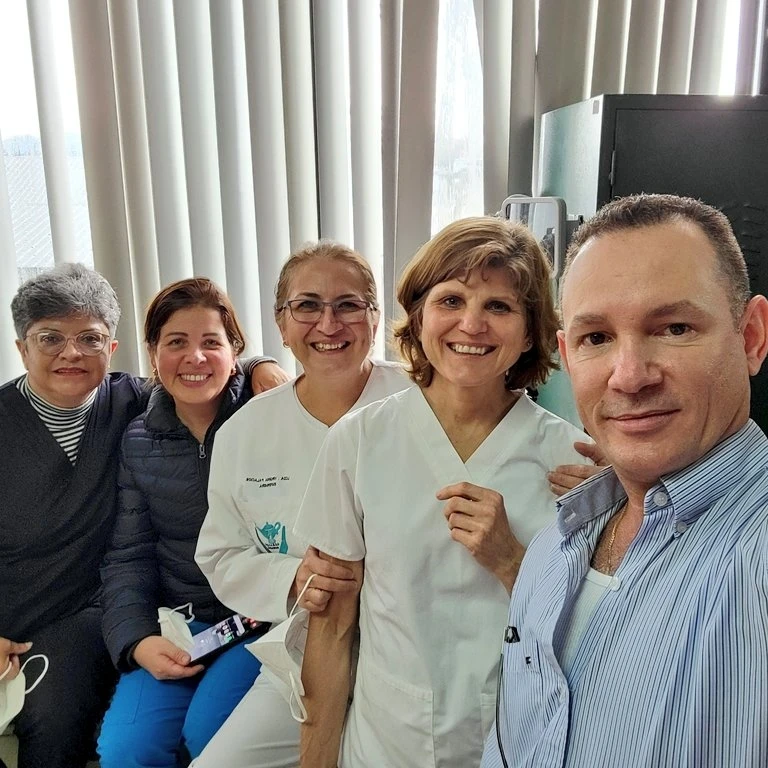
Join medical group trips, Nurses Without Borders, and Dentists Without Borders to make a difference in underserved communities worldwide. Learn about the countries where these programs operate and read real-life experiences from volunteers. Volunteering overseas is an excellent opportunity to make a difference in the lives of others while experiencing new cultures and forging unforgettable…
-
Embrace Overseas Service | Transform Lives Through Global Volunteerism

International Volunteering: Discover Meaningful Travel and Transform Lives with A Broader View
-
A World of Opportunities: Unveiling the Benefits of International Volunteer Programs

Discover numerous benefits of international volunteer programs and unleash a world of rewarding opportunities with our in-depth guide.



